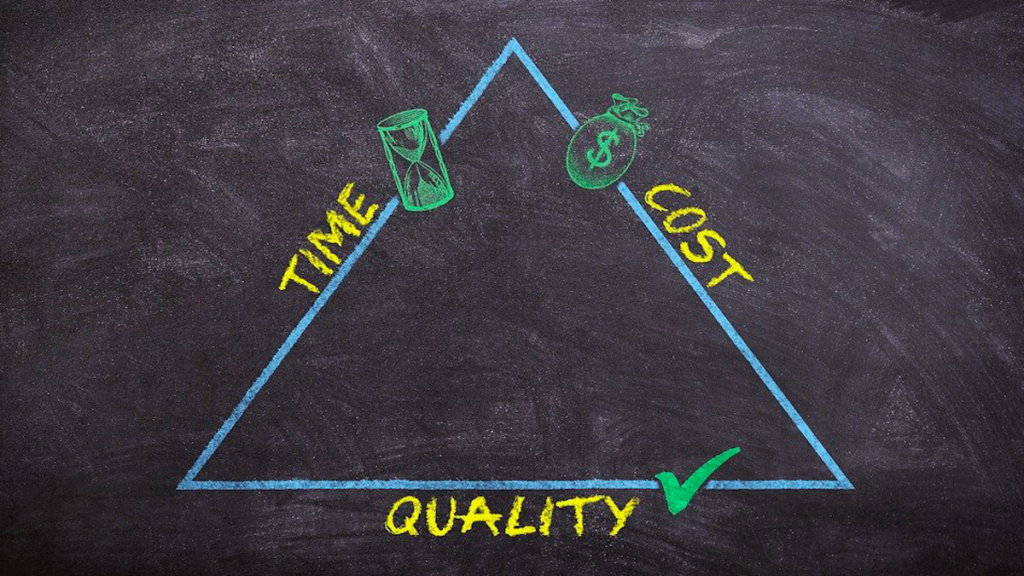Featured image by PCB-Tech from Pixabay
In a perfect world, you’d never need a budget for anything, because there’d always be enough money. However, in this imperfect world, funds are almost always limited. Since you only have so much money available, you need to estimate project costs ahead of time and come up with an accurate budget for each project.
Doing so can do more than help you determine whether a project is financially feasible. It can also help you weigh the predicted benefits against the anticipated costs to see if completing a project is worthwhile. While most projects have a host of direct costs that are easy to identify and estimate, you also need to make sure you’re considering indirect project costs as well.
RELATED ARTICLE: TAKE CONTROL OF YOUR BUSINESS DEBTS
Categorizing Project Costs
Project costs are categorized in a variety of different ways. It depends on how your organization prioritizes project budgeting. For instance, which costs are fixed and which variable, which are sunk (or already incurred) and which are not. However, the easiest way to think of categorizing project costs is to sort them into two buckets: direct and indirect.
Direct Costs
Direct costs include all those that go directly into moving the project forward. When you’re estimating a project’s budget, direct costs are probably the first ones that come to mind. These include the costs of equipment, materials, and supplies.
Some examples include software programs you need to complete the project, salaries for team members who will complete the project, costs for travel to and from work sites, and even the cost of hiring subcontractors or paying vendors to contribute to the project. You can identify these costs easily by talking to your team. You and your team should also brainstorming all of the things you’ll need to bring the project to completion.
Indirect Costs
Indirect costs may be a little harder to estimate. These are generally divided into overhead costs and general costs. Overhead costs include things you need to complete the project but that also help you conduct other aspects of your business. These costs may be essential to realizing everything your company does. Also, they can be hard to split up and allocate between projects and business processes. These include things like employee benefits, rent for office space and other facilities, and costs for general business supplies like furniture and equipment.
Take It One Step at a Time
To translate direct and indirect project costs into a workable project budget, you need a step-by-step strategy and a reliable software tool for estimating project costs and project management. First, consider the purpose of your budget estimate. Who’s it for? What level of detail does it require? Who will be receiving copies, and what information will they want to see in the estimate? What’s the scope of the estimate?
With those questions answered, you can move on to the next step of the process: assemble your team and brainstorm your project costs. Outline how the team will be approaching the project, develop a project timeline, and create a schedule for completion. Then you can estimate the required man-hour costs.
Next, define the basic characteristics of the finished project. Hammer out technology requirements, security, support, testing, and deployment. Define a work breakdown structure for the project, divide the project into work packages, and then create a checklist that accounts for schedule and cost drivers.
At this stage, define what is and isn’t included in the budget estimate for project costs. Remember to identify any assumptions reflected in the estimated costs. Create a data collection plan to analyze cost drivers as you move through the stages of the project to completion. You can develop a cost schedule based on the breakdown of work packages in the work breakdown structure.
Then you can develop sensitivity analysis to test how sensitive your budget is to changing costs or even a change in the assumptions underlying your estimate. Determine the schedule and technical risks relevant to each work package in the work breakdown structure and estimate their costs.
By now, you should have documentation to support every cost in your budget estimate. You can submit your estimate to management for approval, and make any changes required.
Final Thoughts
Developing a project budget estimate can feel like a leap of faith. It can be so hard to predict all the costs that a project might require, even when you’re working with a strong, experienced team. Its essential to have an accurate estimate of project costs so your project has a solid foundation to start on. So, it’s well worth taking the time to get it right.
RELATED ARTICLE: BUDGET PLANNING ADVICE FOR NEW BUSINESS OWNERS


